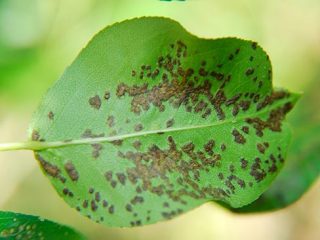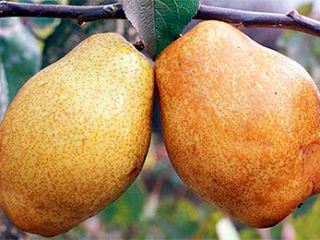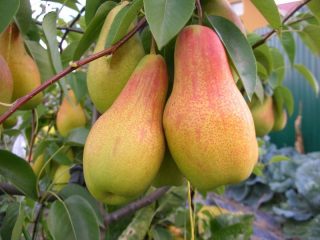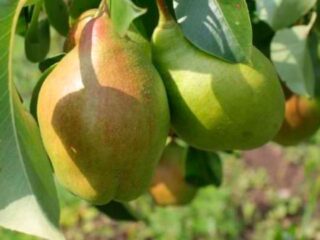Content
Concord pear is a winter variety that is very popular among amateur gardeners and is actively grown on an industrial scale in Europe, but is still little known in Russia. Although all the prerequisites for its spread exist not only in warm southern regions, but also in areas with a temperate climate. The variety is relatively unpretentious in care, cold-resistant, the fruits are distinguished by outstanding taste, keeping quality and transportability.
History of origin
Concorde pear is a variety originally from Great Britain, which appeared in the late 70s of the last century in Kent, specifically at the East Malling research station. It was the result of crossing the Conference and Doyenne du Comice pears, which have long been well known to both specialists and amateur gardeners.
Description of Concord pear with photo
Externally, the fruits of the Concord pear are very reminiscent of one of its “ancestors” - the Conference. The tree itself cannot boast of an original “appearance”.
Tree
Concord pear is a low (maximum 3 m, most often 1.8-2 m) tree characterized by an average growth rate. The crown is not spreading, quite compact.
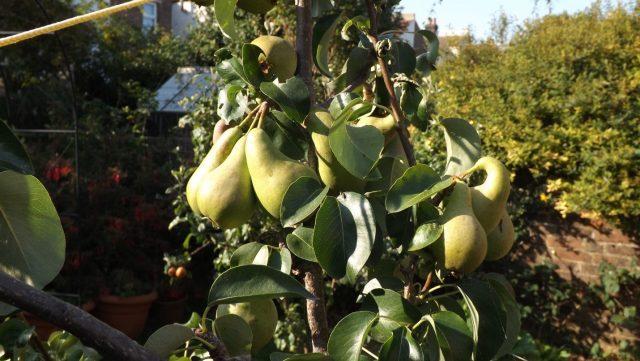
The shoots are relatively powerful and strong, densely leafy, the leaves are dense, leathery to the touch
The Concord pear blooms quite late. For Russian gardeners, this is a definite plus - there is less risk of buds and fruit ovaries falling under recurrent frosts in temperate climates.
Fruit
The fruits of the Concord variety look very presentable: they are one-dimensional, symmetrical, classic “pear-shaped”, slightly elongated. The average weight of the fruit is 200-220 g. Individual specimens gain weight up to 350 g.
The skin of the Concord pear is thin, not hard, but quite strong, dull yellowish-green in color, slightly “greasy” to the touch. Where the sun illuminates it, it turns yellow and a layer of beige “rust” appears.
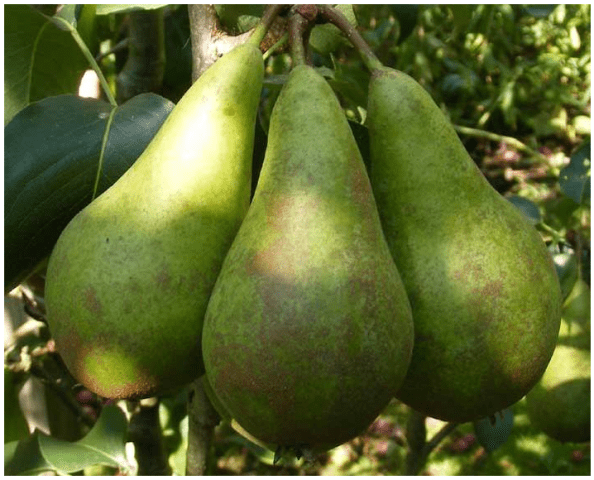
Subcutaneous points on fruits are multiple, clearly visible
Characteristics of the variety
The combination of the dessert taste of the fruit with other characteristics allows us to classify the Concord pear as a valuable industrial variety. However, it is readily planted not only by professional farmers, but also by amateur gardeners.
Taste qualities
The taste of the Concord pear is outstanding: the flesh is distinctly sweet, but not insipidly cloying, but with a slight “balancing” sourness. The texture is smooth, buttery, very juicy, with a barely noticeable crunch. The color of the pulp varies from snow-white to yellowish-cream, sometimes with a greenish tint.
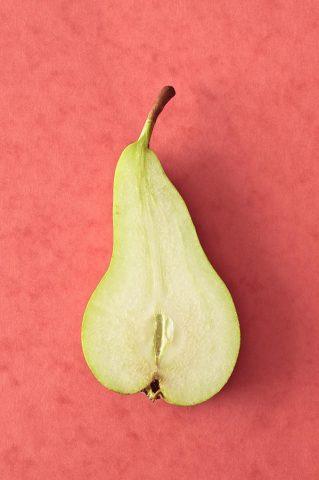
The pulp is characterized by a delicate sweetish aroma, which persists after heat treatment in homemade preparations.
Ripening time
According to the ripening period, the Concord pear belongs to the late-ripening category. The fruits reach technical maturity by the end of October. They can be stored without loss of consumer properties for at least four months, more often this period is six months.
Productivity
The Concord pear begins to bear fruit 3-4 years after the seedling is planted in a permanent place. Based on this, the variety belongs to the category of early ripening. The approximate yield of an adult tree is 90-100 kg of fruit. It reaches such “indicators” by 8-10 years. The general period of productive life is 18-20, maximum 25 years.
Frost resistance
The cold resistance of the Concord pear is about -30 °C. Accordingly, it is able to overwinter in Russia not only in the North Caucasus and the Black Sea region, but also in the middle zone, in regions with a temperate climate, where summers can be quite cool and the weather is somewhat unstable. However, there is no extensive practice of its cultivation, which allows us to assess the presence and degree of damage from frost depending on temperature, duration of cold weather, thickness of snow cover and other factors.
Concord pear pollinators
The Concord pear belongs to the category of diploids, that is, self-sterile varieties. If there are no other trees nearby, a maximum of 10-15% of flowers turn into ovaries. The following varieties are used as pollinators:
- Clapp's favorite;
- Good Louise;
- Verdi;
- Abbot Vettel;
- Williams summer.
Growing regions
In Europe, the Concord pear is distributed almost everywhere. Its “plantations” occupy quite large areas in Belgium, France, Italy, and Spain. In Russia, this variety is cultivated by individual enthusiasts, mainly in the Black Sea region.
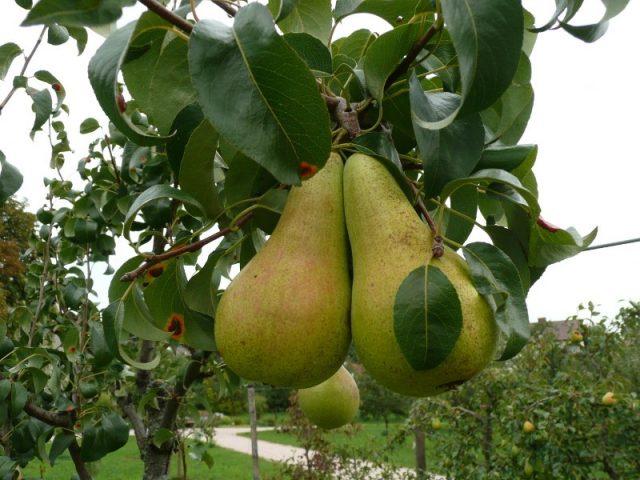
The Concord pear is also known in the former Soviet republics, but it is not popular there as an industrial variety either.
Disease resistance
The Concord pear has “innate” immunity only to scab and moniliosis. But the experience of its cultivation shows that the general hardiness of the tree also includes successful resistance to fungal diseases and other pathogenic microflora, including bacterial leaf blight.
Advantages and disadvantages
On an industrial scale, the Concord pear is grown not only for the sale of fresh fruits. It is actively used for preservation; the characteristic taste and aroma are preserved.
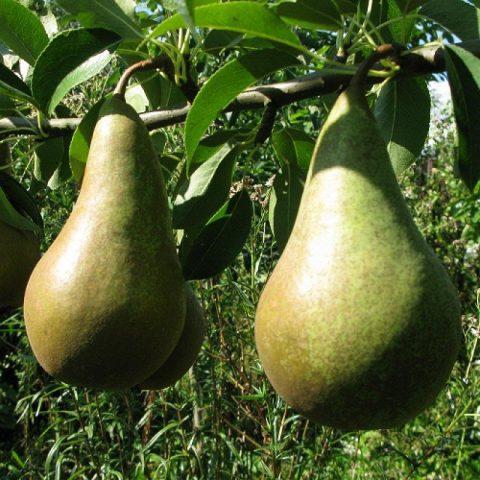
Concord pear is great for making any homemade sweets
Pros:
- relative ease of care;
- the presence of immunity against several diseases dangerous to the culture, good resistance to other pathogens;
- cold resistance sufficient not only for Europe, but also for Russia;
- annual fruiting, consistently high yield;
- precociousness;
- good transportability, long shelf life of fruits;
- compactness of the tree, its relatively slow growth, loose crown;
- presentable appearance, large pear size;
- outstanding taste of fruits, versatility of their purpose;
Minuses:
- the need to plant pollinator varieties nearby.
Landing rules
The location for planting the Concord variety is selected taking into account the same criteria as for other pears:
- good lighting;
- possibility for air circulation;
- protection from sudden gusts of cold wind;
- deep (at least 2-2.5 m below ground level) groundwater;
- simultaneously fertile and relatively loose substrate;
- soil acid-base balance is close to neutral.
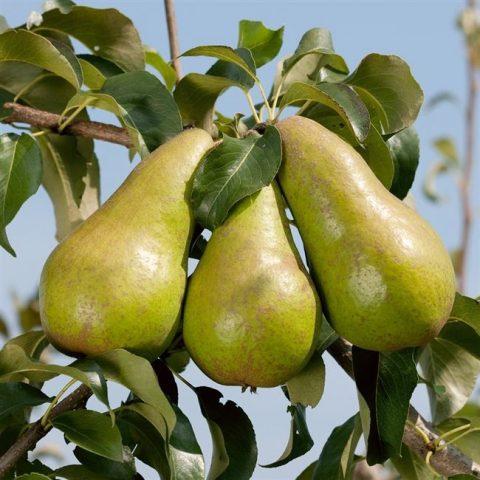
When planted in the shade, the size of Concord pears decreases and they lose a lot of flavor.
The approximate dimensions of the planting pit for the Concord pear are 70x70 cm. Both spring and autumn planting are practiced; you need to focus mainly on the characteristics of the local climate. The hole filled with fertile soil is allowed to “stand” for at least several weeks. Planting follows a common algorithm for all fruit and berry trees.
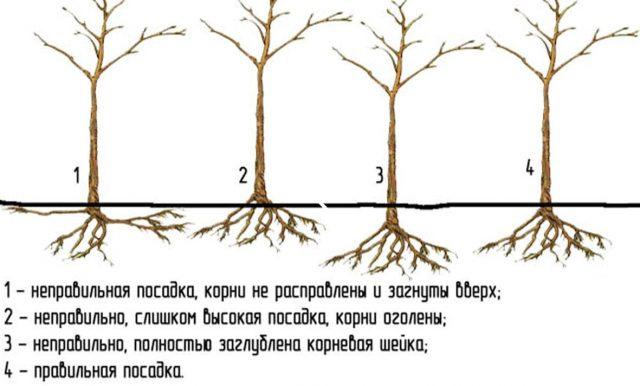
In order to avoid typical mistakes when landing, it is better to study the algorithm of actions and important nuances in advance.
Care instructions
The Concord pear cannot be called capricious in terms of agricultural technology. In order to bear fruit consistently and abundantly, “basic” care measures are enough for her:
- Watering. Like any winter variety, the Concord pear does not like heavy watering. In the absence of precipitation, adult trees are watered every 12-15 days, young seedlings - weekly. In hot weather - twice as often. The approximate norm is 30-50 liters. A month before harvest, watering is stopped.
- Fertilizer application.The tree only needs one nitrogen fertilization at the beginning of the season and three complex ones - during flowering, a month after it and 12-15 days after harvesting.
- Trimming. The Concord pear is suitable for a sparsely tiered crown shape. It is created in 3-4 seasons, then you just need to maintain the result. The tree also needs sanitary pruning at the beginning and end of the season.
- Preparing for winter. Mandatory measures include cleaning the trunk circle from debris, updating the mulch layer, and whitewashing the trunk. For young seedlings, it is recommended to additionally insulate the base of the trunk.
- Preventive measures. At the beginning and end of the season, insecticide and fungicide treatments are desirable. In spring and summer, they are repeated when there are “massive” attacks of pests on the garden or if the weather has been favorable for the development of pathogens for a long time. When there are no such “threatening” circumstances, you can get by with folk remedies for prevention.
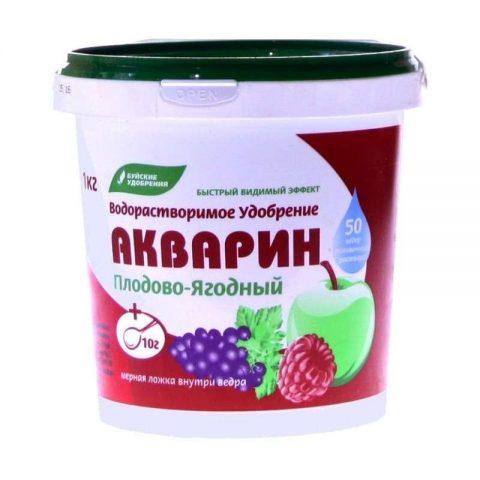
Annual abundant fruiting requires the pear to “pull” a lot of nutrients from the soil; this deficiency must be compensated
Collection and storage
To pick Concord pears, choose a fairly warm, dry day. Wet fruits, even if dried before storing, noticeably lose their shelf life and are more prone to fungal diseases.
Fruits are removed from the branches along with the stalks and be sure to be sorted. The “substandard” category, which needs to be thrown away or eaten quickly, includes all specimens with mechanical and other damage, even minor ones.
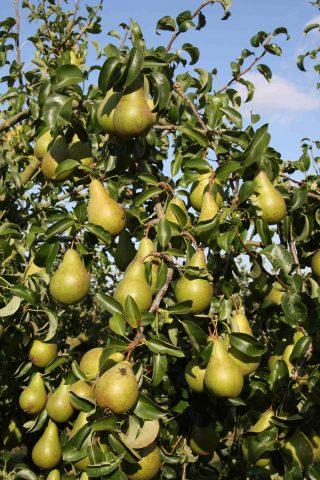
Even completely ripe Concord pears adhere firmly to the branches and do not fall off
Concord pears are stored in any breathable container. It is advisable that the boxes or boxes be low and accommodate a maximum of 1-2 layers of fruit.They need to be “insulated”, sprinkled with sawdust, wood shavings, and scraps of newsprint.
The easiest way to create optimal storage conditions is in the basement or cellar:
- temperature 2-3 °C;
- air humidity 80-85%;
- lack of light;
- good ventilation.
Conclusion
Concord pear is a variety that is clearly underestimated by Russian gardeners. It belongs to the category of dessert and high-yielding, but at the same time it is not particularly capricious and demanding to care for, and is characterized by sufficient endurance and “stress resistance”. Agrotechnical measures will not take much time and effort from the gardener. The cold resistance of the variety allows it to winter without damage or with minimal damage not only in the southern subtropical regions, but also in areas with a temperate climate.
Reviews from gardeners about the Concord pear

